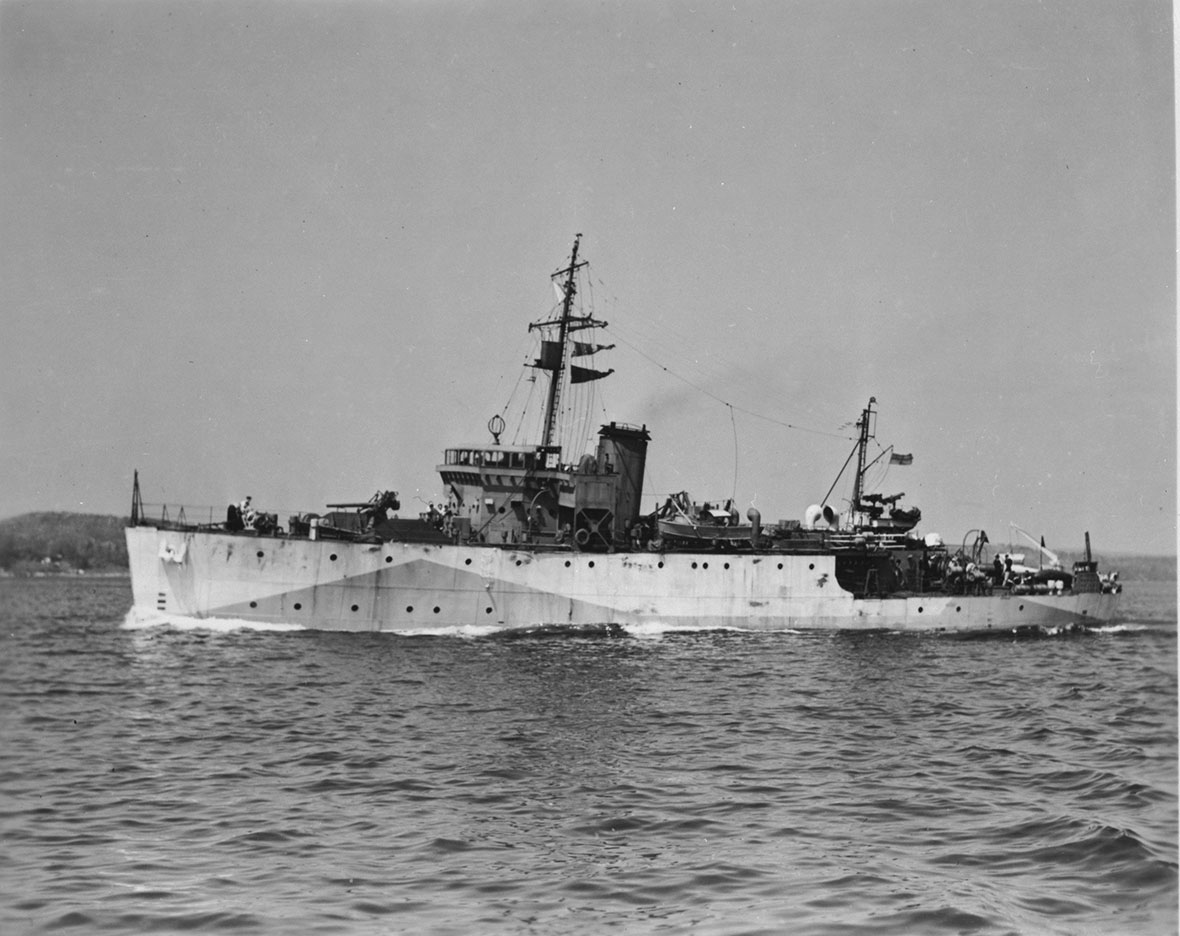HMCS Grandmere
There has been only 1 vessel named Grandmere in the Royal Canadian Navy.
HMCS Grandmere (J258)
The Grandmere was a Bangor class minesweeper. The Bangor class ships were built in order to replace the old Basset class minesweepers, as they were larger, faster, had much greater endurance, and burned oil as opposed to coal. Most of the Bangors were named after Canadian towns and cities, the rest after bays.
As enemy mines were laid only once in 1943 in Canadian waters, the Bangors were used primarily as escorts to coastal shipping or as local escorts to ocean convoys. Sixteen of them, however, assisted in sweeping the approaches to Normandy before D-Day, and stayed to help clear German and Allied minefields in the Channel for some months afterward.
Grandmere was commissioned at Montréal, Quebec, on December 11, 1941. She served for varying periods with Western Local Escort Force, Sydney Force, Halifax Force, and Halifax Local Defence Force.
On October 11, 1942, while with Sydney Force, she rescued 101 survivors of the passenger ferry Caribou, torpedoed in the Cabot Strait. In July 1943, she had a 7-week refit at Louisbourg, Nova Scotia, and underwent a second major refit at Sydney and Halifax, both in Nova Scotia, in September 1944, following which she worked up in Bermuda in February 1945.
Grandmere was paid off at Sydney on October 23, 1945, and placed in reserve at Shelburne, Nova Scotia. Sold in 1947, she was modified for use as a yacht, first renamed Elda and later, Jack’s Bay.
- Builder: Canadian Vickers Ltd, Montréal, Quebec.
- Displacement: 672 tons
- Dimensions: 54.9 m x 8.7 m x 2.5 m
- Speed: 16 knots
- Crew: 83
- Armament: one 4-inch (102-mm) gun, four 20-mm guns (4 single mounts), and depth charges.
Battle honours
- Gulf of St. Lawrence 1942
- Atlantic 1943, 1945
